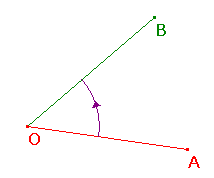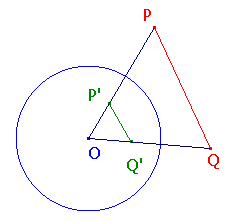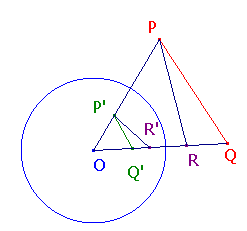


|  |
|
In inversive geometry, we shall generally regard angles as signed quantities. If OA and OB are segments, then there is a unique rotation about O taking A onto the ray OB. We regard this as defining the angle AOB (note the order of the letters). With this definition, we clearly have <BOA = -<AOB. |  |
|||||||||
The Equal Angles TheoremSuppose that C is a circle with centre O, and that P and Q are points other than O.Let P and Q have inverses P' and Q' with respect to C. Then <QPO = <OQ'P' (in magnitude and sense) ProofLet r denote the radius of C.As P and P' are inverse, OP.OP' = r2. As Q and Q' are inverse, OQ.OQ' = r2. Thus, OP.OP' = OQ.OQ', so OP/OQ = OQ'/OP'. Hence, triangles OPQ and OQ'P' are similar. (Note the order of the vertices!) It follows that the given angles are equal in magnitude and sense. |

|
|||||||||
Corollary to the Equal Angles TheoremSuppose that P, Q and C are as in the theorem, and that R lies on the line OQ.Let R' be the inverse of R with respect to C. Then <QPR = <R'P'Q' (in magnitude and sense) Proof
|

|
| Main inversive page | Introduction to Conics | Introduction to Cabri | My Home Page |